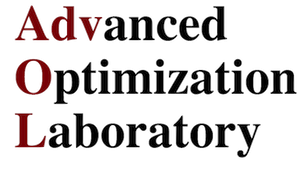| Speaker: | Kai Huang |
| DeGroote School of Business | |
| McMaster University |
Title: Cost Minimization in a Periodic Review Assemble-To-Order System
In an Assemble-To-Order (ATO) system, when the components are allocated to customer orders according to First-Come-First-Serve (FCFS) rules, they may still stay in the inventory due to the lack of other components. Such inventory is called ``remnant stock". In the existing literature, there is no effective means to count the remnant stock, so that an exact cost minimization scheme for ATO systems is missing. In this paper, we consider a periodic-review ATO system with a base stock inventory replenishment policy. We develop a new concept called ``multi-matching", which deviates from previous single item matching in the sense that multiple components must be matched with multiple products. Applying this concept, we are able to define a set of product assembly and component allocation decision variables, which allows us to develop a mathematical program that accurately and simultaneously characterizes the entire operational inventory holding cost and backlogging cost, including remnant stock holding cost. We show that there exists an inherent network flow structure in this formulation. We also prove that the formulation is equivalent to another formulation which only contains the product assembly decision. Furthermore, we compare our cost minimization model with an extension of the reward maximization model of Akcay and Xu (2004). Surprisingly, the cost minimization model can be shown to be a special form of the reward maximization model, with a reward structure depending on the product and assembly time. This relationship allows us to define a new set of holding cost and backlogging cost, which leads to a third equivalent formulation. We explore the structure of the formulations, and propose an enhanced Benders decomposition algorithm. Our numerical experiments show that the behavior of remnant stock is very different from classical inventory. Moreover, in general the portion of remnant stock holding cost is significant enough so that it should be included in any exact cost minimization model. This also implies the necessity of non-FCFS component allocation rules in the future study.


